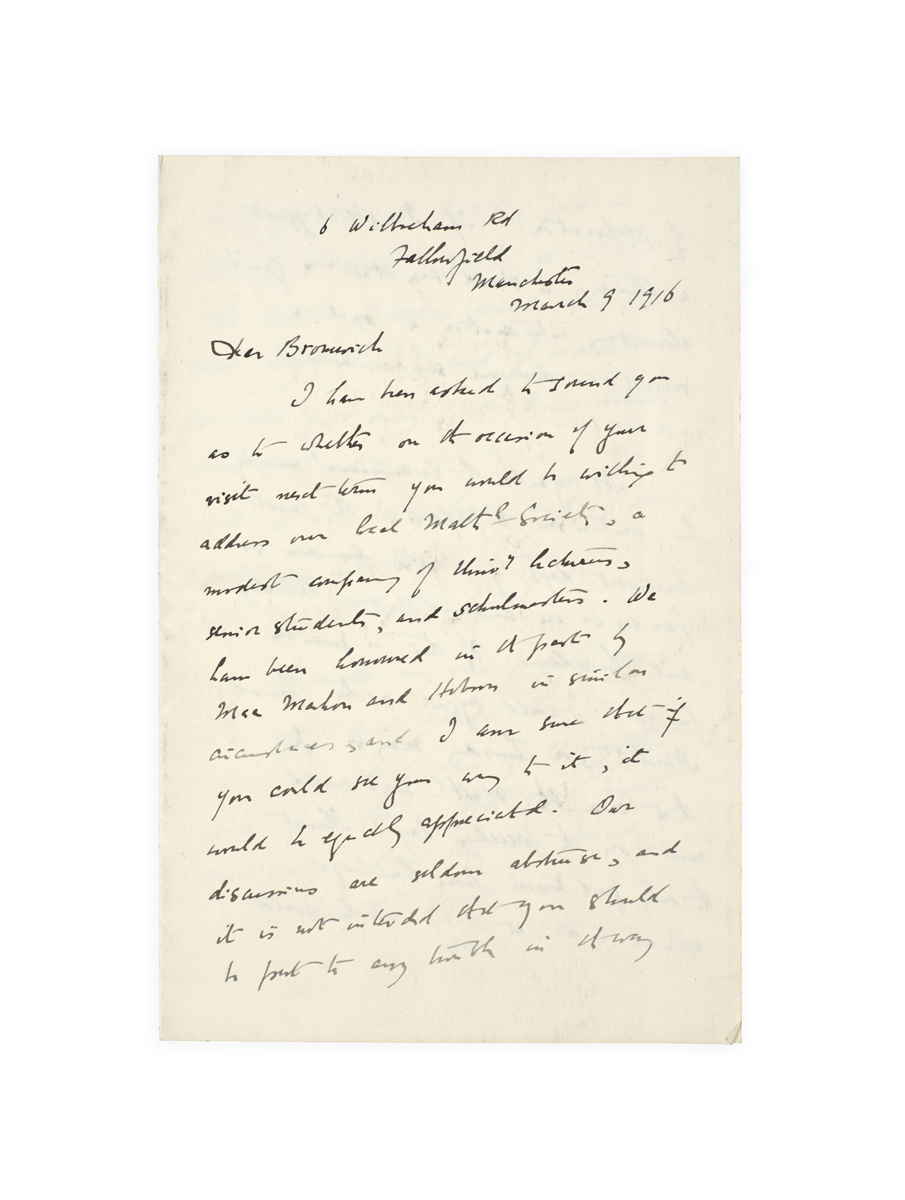
LAMB, Sir Horace.
Autograph letter, signed, to Thomas Bromwich.
6 Wilbraham Road, Fallowfield, Manchester, 9 March 1916.
8vo bifolium (175 x 114 mm), pp. [4]; sometime folded, in very good condition.
A letter from Sir Horace Lamb (1849–1934) to fellow mathematician Thomas Bromwich. Lamb held the chair of pure mathematics at Owens College, Manchester, from 1885 until 1920. He ‘was a talented and inspiring teacher, whose lectures to generations of mathematics, engineering, and physics students at Manchester were remembered for their lucidity and judgement … His contemporaries admired his ability to keep up to date with new developments in a variety of sciences at the same time as he remained primarily a mathematician. Lord Rutherford is said to have identified Lamb as the closest approximation to an ideal university professor that he knew’ (ODNB).
In the present letter Lamb asks Bromwich if he would be willing to give a lecture to the local mathematical society. ‘We have been honoured in the past by [Percy] MacMahon and [E. W.] Hobson in similar circumstances, and I am sure that if you could see your way to it, it would be equally appreciated. Our discussions are seldom abstruse, and it is not intended that you should be put to any trouble in the way of preparation. If I might suggest a topic I should say that a quite elementary introduction to such a subject as divergent series could meet the case. As regards the Examiners’ meeting for criticism of papers, the most convenient days of the week so far as we are concerned are Tuesday and Thursday […] I made my own papers some time ago and handed them in to the office, and have quite forgotten what is in them. Will you kindly send yours when they are ready to the Assistant Registrar? We do not criticize them till we see them in type. They are circulated a few days before the meeting’.
Thomas John I’Anson Bromwich (1875–1929) made significant contributions to pure mathematics and was a vice president of the Royal Society in 1919 and 1920.

